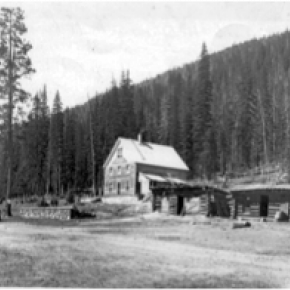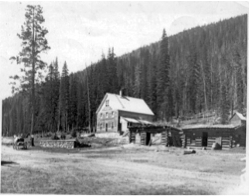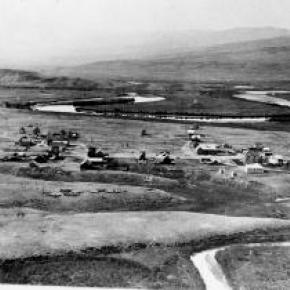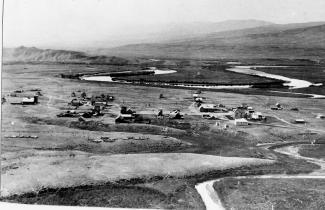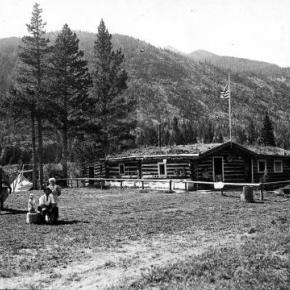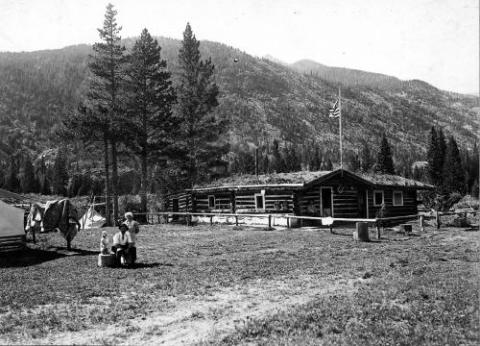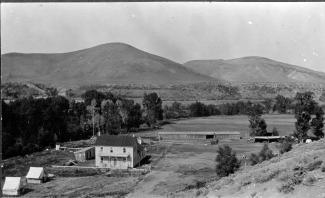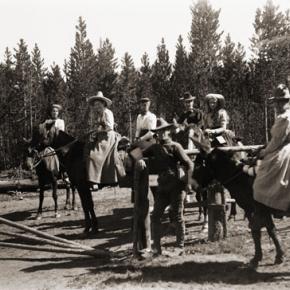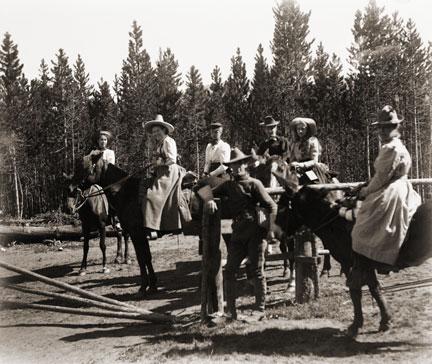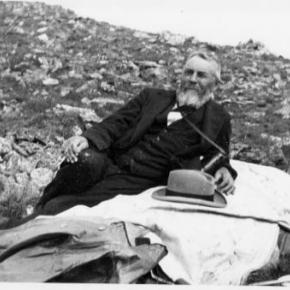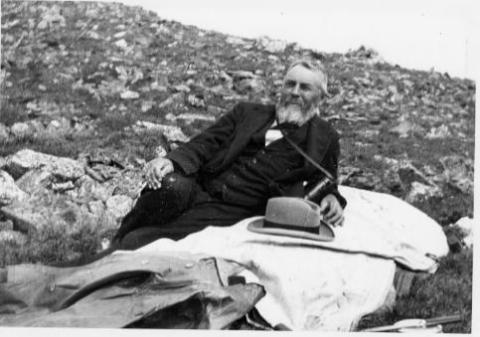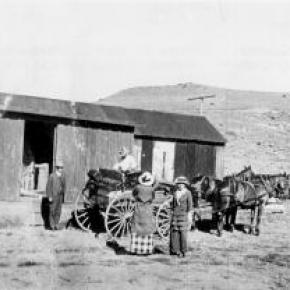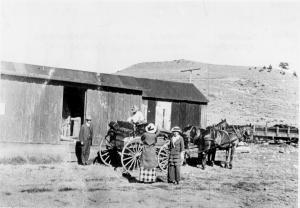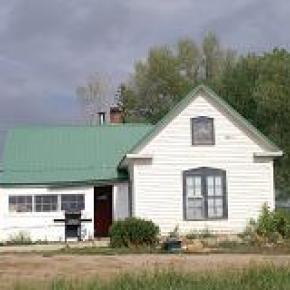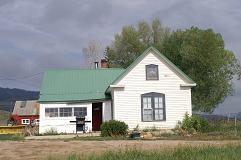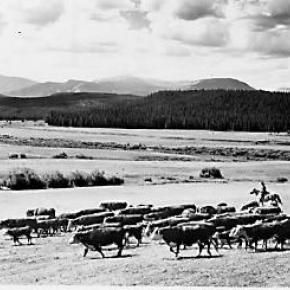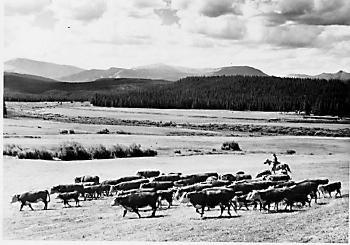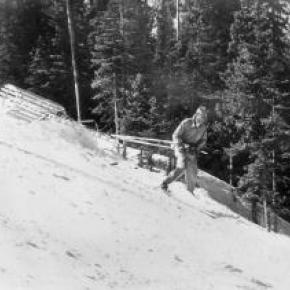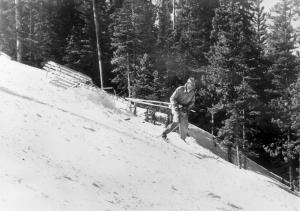Community Life Articles
| Ida Laverne |
Ida Laverne
"Ida Laverne: My Baby Sister" contributed by Vera Shay One Grand Essay Contest, 2005 I didn't remember it at all I was pretty small It was the sixth of November this I do remember Daddy went a-far traveling on his railroad motor-car all the way to Fraser and in good measure Dr. Susie he brought back riding down the railroad track I think with them, that maybe they brought us our baby And that was you Ida LaVerne now it's my turn to say Happy Birthday
|
| John the Cat Man |
John the Cat Man
Old John, the Cat Man, lived just below the red brick railroad station at Winter Park, in a small log cabin, perhaps 10’ x 12’. He was Swedish, or maybe Norwegian. His last name might have been Peterson or Pederson, Swenson or Svenson or Swanson, Larson, Olson, Wilson, or Erickson; all that is lost to history. John surely came into the country first, to work on the Moffat Tunnel. Now, two decades later after the opening of the tunnel, he was mostly retired. However, he was the official deliverer of the U.S. Mail to the Winter Park Post Office. This was in the years between 1945 and 1949 or 1950. |
| Juniper Library at Grand Lake |
Juniper Library at Grand Lake
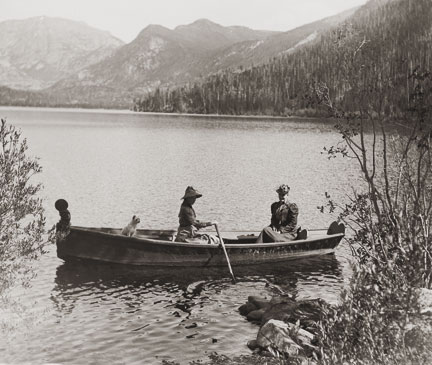
The Grand Lake Library was originally sponsored by the Women's Club of Grand Lake. In January of 1933, the club voted to sponsor a town library to collect sufficient number of books may be obtained to open the in October. A newspaper article from December 13, 1933 stated: "The Grand Lake Woman's Club is glad to announce that its free public library is now open to the public at the home of Mrs. Goldie Hawkins. Books may be exchanged every Thursday from 10 am to 5 pm. There are over 300 volumes of fiction and non-fiction for both adults and children. The Club is grateful to many of our citizens as well as to summer residents who have donated these books. It is by means of their generosity that our library is made possible at this time. Lumber for the shelves was donated by Henry Schnoor, and Preston Hawkins built the shelves without charge." Mary L. Cairns, Chairman Library Board. The Juniper Women's Club, a junior club of the Grand Lake Women's Club first opened a library in January 1945. It started in a small room in the Community house used for town council meetings. The library was allowed to use the room rent free; however, the library was soon bursting out at the seams and unable to take book donations due to lack of space. When the town council and the firemen decided to build an addition on the firehouse in the winter of 1947, the Juniper Club sought and received permission to have an upstairs room of 16 ft. by 18 ft. for the library. There was a condition; the room was to be finished by the club. A contract was let for the complete finishing of the room with built in shelves on the east and west walls and a sub floor. A wiring contract was also let. To earn the money for the payment the club had bingo, potluck suppers, card parties and food in a basket. Since January of 1945 836 books were added to the 900 books of the former library. In February of 1948 the books were all moved to the new library, by hand and through the snow, with the assistance of the club members' husbands. In the summer of 1948 these books were all classified according to the Dewey Decimal System by the club members. From the May 1948-May 1949 Juniper Club President's report:
From newspaper articles of 1949: During the Christmas holidays the new floor was laid and new shelves were built. Materials and labor cost $150 of the club's square dance money. The club spent $650 on the library room. 116 books were added, 75 by donation and 41 were purchased. The Juniper Club then started a beautification program in the area of the town square and around the fire house and library. The Juniper Library at Grand Lake became a branch of the Grand County Library System in 1988. In May of 1995 the Juniper Library moved from the Fire Station to a location just off the town square. With increased library use and development of computer information systems the need for a larger space was recognized and a new library was built adjacent to the Town Hall and dedicated in June of 2006. Serving local residents as well as guests to the community, Juniper Library’s diverse collection, beautiful space, and helpful librarians make it a center of the community. |
| Kremmling Bank Robbery |
Kremmling Bank Robbery
Article contributed by Robert Peterson and Elsie Fletcher Ruske The summer of 1933 offered more excitement than usual. First there was a lost child who kept most of the Fraser Valley busy searching for several days. Just two days later, the town of Kremmling was visited by two criminals who came to rob the local bank.
|
| Kremmling Library |
Kremmling Library
A public library was first located in Kremmling, in 1967. Vi Johnson and Virginia Taussig researched and then established a library in the elementary school basement. The basement of the school was no longer used for classes because it did not meet the Kremmling fire codes. Prior to the opening of the Kremmling Library, residents traveled to Hot Sulphur Springs to visit a library. The library staff consisted of volunteers and was open on Wednesday and Saturday afternoons. Shelving was built from cinder blocks and varnished boards. The sparse collection began with books borrowed from the library in Hot Sulphur Springs and donations. As the community whole-heartedly embraced the new library, hours were added and the county employed Betty Nunn, as librarian, and Virginia Taussig to work with her. In 1977 the library moved into what is now the community room of the Kremmling Library. The building is owned by the Town of Kremmling and had previously been owned by the government and housed the BLM. When the building was given to the town it was stipulated that it could be used for recreational purposes only, so the library was called the "Reading Room". As more and more books were added to the library collection construction began to enlarge the "Reading Room" into what is now the children's library. The main and larger portion of the building was still being used as a garage to store the Town of Kremmling's fleet of trucks. Growth and interest soon made it necessary to remodel and take down walls for the expansion into the whole building. Betty Nunn retired in 1988 shortly after the remodeling and expansion project was completed. Today, the Kremmling Library houses a diverse collection of books, magazines, newspapers, DVDs, sports equipment, games, activity passes, digital resources, and all sorts. Public computers and wifi are available for use as well as a meeting and study room. A multitude of programs for all members of the community are offered. Thanks to the dedication and hard work of its founders, Kremmling now boasts a very modern and well used library. |
| Leisure Time |
Leisure Time
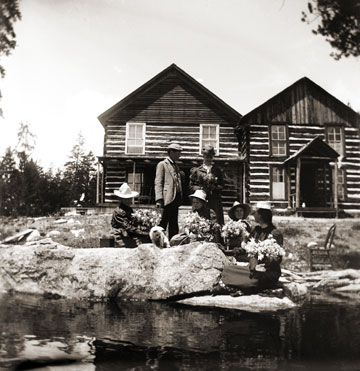
Of all the leisure time activities available to the pioneers, dancing was the favorite. Dances were held in grand hotels that remained from the mining boom, such as the Fairview House and The Garrison House in Grand Lake. Quadrilles, a type of square dance, were popular at the time. A fiddler would provide the music and serve as the caller. These parties would start in the evening and last all night. |
| Libraries |
Libraries
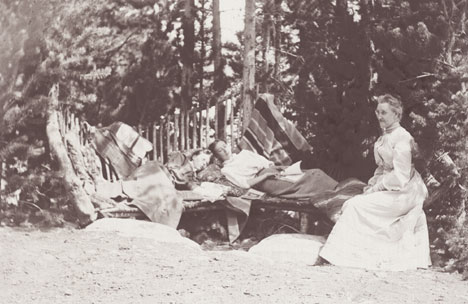
In 1938, Grand County decided to establish a library to act as a central reservoir of knowledge for its citizens. The community realized that few people can purchase all of the books and other materials which they may need, and so they agreed to pool their money in the library to build its central collection. At the same time they wanted to be sure that their interests would always be represented in the operations of the library, and so they formed a board of trustees from among themselves. |
| Like Father Like Son |
Like Father Like Son
The Wichita Millers lived in one of those lovely old homes, blessed with fine trees lining the streets, large shady yards, and an easy arrangement within, that made family or visitors feel welcome. Three stories and a basement allowed plenty of space for a family of six. The roomy dining area looked out onto the grassy backyard and flower garden, but the windows were rather small. About this time, the notion of picture windows came into being. C.D. thought about this for a spell; good idea! I want more light and a view. Following through on the idea, he fetched his sledge hammer one afternoon and with a mighty wallop, he broke through the dining room wall! Presto....a larger scene. It took a while to trim out the whole, but the end result was totally satisfying. This "grab the bull by the horns" attitude was passed through to Dwight. We had moved into a nice modular home in December 1979. A few years later, we decided we needed a garage; the solution was to lift the house and build a lower floor beneath it. Dwight, his Uncle Ed, and I drove to the ski area where some used oak railroad ties had been cast aside. We gathered a large number of these (Have you ever tried hefting a tie?) and we hauled them home. Dwight had four extra-powerful jacks that he'd used previously to lift houseboats down at Lake Powell. After undoing all the foundation bolts, we started lifting, first one end, then another, building increasingly high cross-hatch type supports near each corner as we raised the house higher and higher. We lived there the entire time this was going on and the house shook with our every step. By the grace of God, no huge winds came up during the whole process. Each morning, Dwight disconnected the water and the sewer lines. Each evening, he reconnected everything. When we were up about eight feet, Dwight and his uncle built stud walls and stood the first wall beneath one side of the house. Would you believe that, thanks to the irregular ties, the house was skewed about six inches out of alignment? Troubles. Now what? Dwight decided that he would take his CAT and carefully push the house back into line, readjusting the braces as he went. That was the day I chose to go to Denver for supplies, knowing full well that when I returned, my piano and good china would be sitting in Ranch Creek. But no. When I got back, all four stud walls were securely in place and the upper floor was resting safely on top. Was it the luck of dumb dumbs? Brilliance? Who knows? Well, in order to go downstairs, we had a fairly steep stairway. We had looked at our various options for less steep stairs, but one would have ended up in the middle of the garage and the other would have had to start in our bedroom. Not good choices. Thus it was steep. Somebody accused us of having the only carpeted ladder in the county. It was also rather dark. One Thanksgiving Day when the family was gathered round, Dwight got the brilliant idea to cut an opening in the upper section of the wall at the top of the stairs, to make it lighter. The family agreed that this was a great idea and they were excited to see how this was accomplished. Out came the skill saw, bursts of sawdust flew into my nice clean living room and onto my counters where I was trying to prepare a festive dinner. I tried to shield the food from sawdust. I tripped over the cord while setting the table. I scrambled over scrap wood trying to reach pans and dishes. But the family loved it. By supper time, a rough hole definitely brought more light, and amazingly, we were still married! |
| My Granby, Little Old Log Church |
My Granby, Little Old Log Church

Contributed by Vera "Stathos" Shay, Kremmling...Granby resident 1930-1945 From what I hear It is very near To be torn away The little church of my childhood day The most beautiful to see That can ever be Inside and out Without a doubt Built of log so fine In the style of old time In my own little chair Every Sunday I was there The chime of its bell For miles around Heard its wonderful sound For a while our school We didn't fit So in our church were classes For a bit Beside our church on the hill We sledded for a thrill That poor little church They moved it around All over town Proudly it's hung together In all kinds of weather Every time I go to Granby town I look around to find And have a look At my log church for my eyes' Memory book Now they say it's got to go Pray it won't be so All of you Granby folk Louder you should have spoke To save that church with its Memories and history For there could never be Anything that would compare Built or put there With my magnificent, beautiful Childhood Granby log church Find it in your hearts To never let it be torn apart.
April 2005
|
| National Sports Center for the Disabled |
National Sports Center for the Disabled

May 8, 2010 Sky-Hi News In January 1970, Gerald Groswold, then chairman of the board of Winter Park Ski Area, received a call from the Children's Hospital of Denver about program they'd been running at Arapahoe Basin for amputee children. A-Basin wasn't going to continue the program, and the hospital wanted to bring it to Winter Park. |
- ‹ previous
- 4 of 7
- next ›









